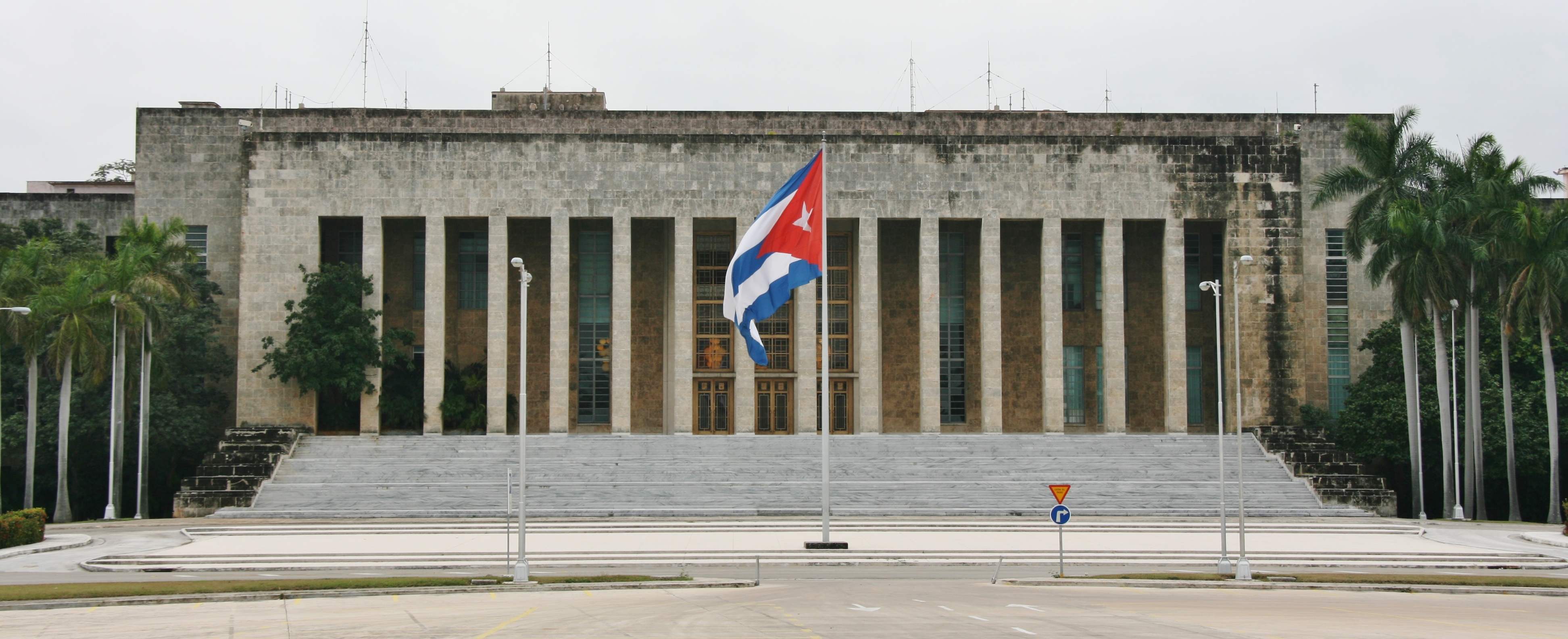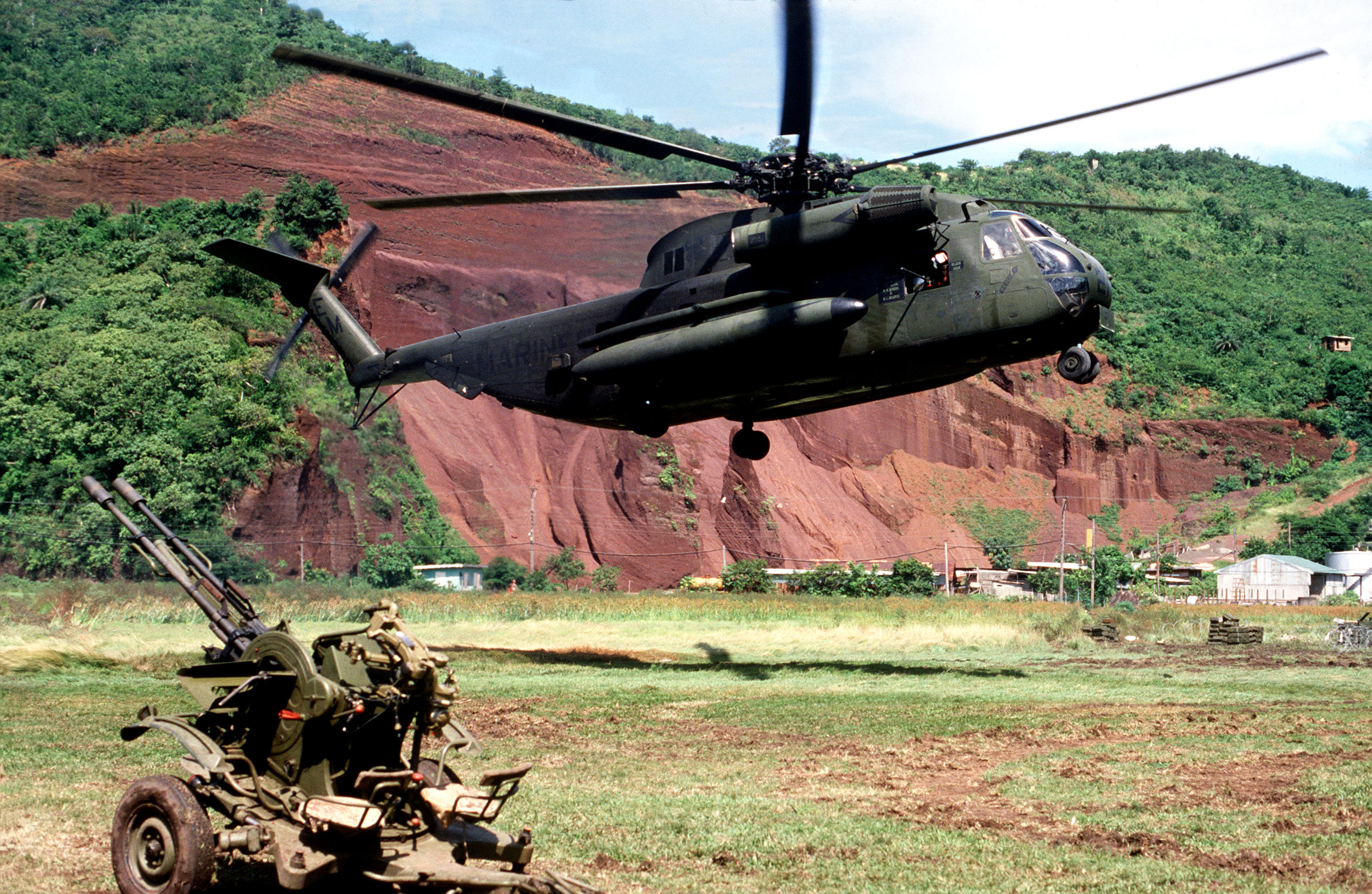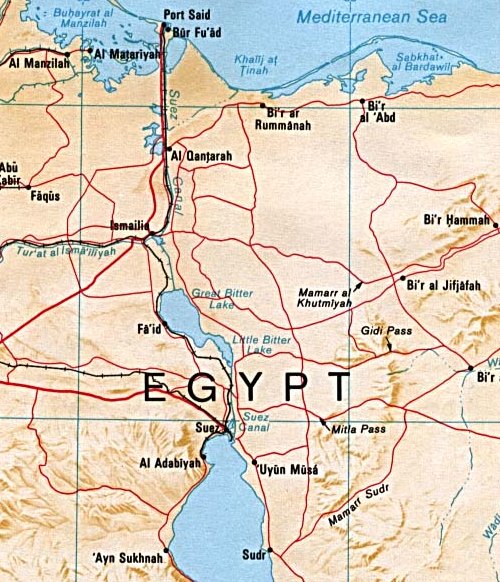|
Cuban Armed Forces
The Cuban Revolutionary Armed Forces ( es, Fuerzas Armadas Revolucionarias; FAR) are the military forces of Cuba. They include ground forces, naval forces, air and air defence forces, and other paramilitary bodies including the Territorial Troops Militia (''Milicias de Tropas Territoriales'' – MTT), Youth Labor Army (''Ejército Juvenil del Trabajo'' – EJT), and the Defense and Production Brigades (''Brigadas de Producción y Defensa'' – BPD), plus the Civil Defense Organization (''Defensa Civil de Cuba'' – DCC) and the National Reserves Institution (''Instituto Nacional de las Reservas Estatales'' – INRE). All these groups are subordinated to the ''Ministro de las Fuerzas Armadas Revolucionarias'' (" Ministry of the Revolutionary Armed Forces" – MINFAR). The armed forces have long been the most powerful institution in Cuba. The military manages many enterprises in key economic sectors representing about 4% of the Cuban economy. The military has also served as forme ... [...More Info...] [...Related Items...] OR: [Wikipedia] [Google] [Baidu] |
Ranks Of The Cuban Revolutionary Armed Forces
The ranks of the Cuban Revolutionary Armed Forces are the military insignia used by the Cuban military The Cuban Revolutionary Armed Forces ( es, Fuerzas Armadas Revolucionarias; FAR) are the military forces of Cuba. They include ground forces, naval forces, air and air defence forces, and other paramilitary bodies including the Territorial Tro .... Current insignia In 1980-1989 Cuba used ranks and insignia based on the Soviet system (to the extent of copying the embroidery pattern on officers' shoulderboards). Nowadays, rank insignia are green colored for officers up to senior colonel and the rank insignia used during the early 1970s for junior officers were reinstated. Moreover, other ranks insignia are now on the sleeve and are similar to those used during the Cuban Revolution by the Rebel Army. Only general rank insignia are still based on the Soviet system. Officers The following are the rank insignia for commissioned officers. Other ranks The following are the ran ... [...More Info...] [...Related Items...] OR: [Wikipedia] [Google] [Baidu] |
Escambray Rebellion
The Escambray rebellion was an armed conflict from 1959 to 1965 in the Escambray Mountains during which several insurgent groups fought against the Cuban government led by Fidel Castro. The military operation against the rebellion was called the Struggle Against Bandits ( es, Lucha contra Bandidos, or LCB) by the Cuban government. The rebels were a mix of former Batista soldiers, local farmers, and leftist ex-guerrillas who had fought alongside Castro against Batista during the Cuban Revolution. The end result was the elimination of all insurgents by Cuban government forces in 1965. Beginning The uprising began almost immediately after the success of the Cuban Revolution in 1959. It was led by an ex-guerrilla that had fought against Batista before, but rejected the socialist turn the Cuban Revolution had taken and the ensuing close ties with the Soviet Union. Small landowning farmers, who disagreed with the socialist government's collectivization of Cuban farmlands also played a ... [...More Info...] [...Related Items...] OR: [Wikipedia] [Google] [Baidu] |
List Of Heads Of State Of Cuba
This article lists the heads of state of Cuba from 1902 until the present day. Between 1902 and 1976 (under the 1901 and the 1940 constitutions), the role of the head of state was performed by the President of Cuba. Between 1976 and 2019 (under the 1976 Constitution), the position of President was abolished and replaced by the President of the Council of State. On 24 February 2019 (under the 2019 Constitution), the position of President was restored. The current president (until 10 October 2019, officially called President of the Council of State) is Miguel Díaz-Canel, since 19 April 2018. Presidents of Cuba Republic of Cuba (1902–1906) Second Occupation of Cuba (1906–1909) Republic of Cuba (1909–1959) Republic of Cuba (1959–present) See also *Cuba ** Captaincy General of Cuba **United States Military Government in Cuba **Republic of Cuba (1902–1959) **List of colonial governors of Cuba **Council of State (Cuba) ***President of Cuba ***Vice President o ... [...More Info...] [...Related Items...] OR: [Wikipedia] [Google] [Baidu] |
Communist Party Of Cuba
The Communist Party of Cuba ( es, Partido Comunista de Cuba, PCC) is the sole ruling party of Cuba. It was founded on 3 October 1965 as the successor to the United Party of the Cuban Socialist Revolution, which was in turn made up of the 26th of July Movement and Popular Socialist Party that seized power in Cuba after the 1959 Cuban Revolution. The party governs Cuba as an authoritarian one-party state where dissidence and political opposition are prohibited and repressed. The Cuban constitution ascribes the role of the party to be the " leading force of society and of the state". The highest body within the PCC is the Party Congress, which convenes every five years. When the Congress is not in session, the Central Committee is the highest body. Because the Central Committee meets twice a year, most day-to-day duties and responsibilities are vested in the Politburo. Since April 2021, the First Secretary of the Central Committee has been Miguel Díaz-Canel, who has been serv ... [...More Info...] [...Related Items...] OR: [Wikipedia] [Google] [Baidu] |
Cuba
Cuba ( , ), officially the Republic of Cuba ( es, República de Cuba, links=no ), is an island country comprising the island of Cuba, as well as Isla de la Juventud and several minor archipelagos. Cuba is located where the northern Caribbean Sea, Gulf of Mexico, and Atlantic Ocean meet. Cuba is located east of the Yucatán Peninsula (Mexico), south of both the American state of Florida and the Bahamas, west of Hispaniola ( Haiti/Dominican Republic), and north of both Jamaica and the Cayman Islands. Havana is the largest city and capital; other major cities include Santiago de Cuba and Camagüey. The official area of the Republic of Cuba is (without the territorial waters) but a total of 350,730 km² (135,418 sq mi) including the exclusive economic zone. Cuba is the second-most populous country in the Caribbean after Haiti, with over 11 million inhabitants. The territory that is now Cuba was inhabited by the Ciboney people from the 4th millennium BC with the Gua ... [...More Info...] [...Related Items...] OR: [Wikipedia] [Google] [Baidu] |
United States Invasion Of Grenada
The United States invasion of Grenada began at dawn on 25 October 1983. The United States and a coalition of six Caribbean nations invaded the island nation of Grenada, north of Venezuela. Codenamed Operation Urgent Fury by the U.S. military, it resulted in military occupation within a few days. It was triggered by the strife within the People's Revolutionary Government which resulted in the house arrest and execution of the previous leader and second Prime Minister of Grenada Maurice Bishop, and the establishment of the Revolutionary Military Council with Hudson Austin as Chairman. The invasion resulted in the appointment of an interim government, followed by elections in 1984. Grenada had gained independence from the United Kingdom in 1974. The allegedly communist New Jewel Movement seized power in a coup in 1979 under Maurice Bishop, suspending the constitution and detaining several political prisoners. In September 1983, an internal power struggle began over Bishop's lea ... [...More Info...] [...Related Items...] OR: [Wikipedia] [Google] [Baidu] |
Ogaden War
The Ogaden War, or the Ethio-Somali War (, am, የኢትዮጵያ ሶማሊያ ጦርነት, ye’ītiyop’iya somalīya t’orineti), was a military conflict fought between Somalia and Ethiopia from July 1977 to March 1978 over the Ethiopian region of Ogaden. Somalia's invasion of the region, precursor to the wider war,. met with the Soviet Union's disapproval, leading the superpower to end its support of Somalia and support Ethiopia instead. Ethiopia was saved from defeat and permanent loss of territory through a massive airlift of military supplies worth $1 billion, the arrival of more than 12,000 Cuban soldiers and airmen sent by Fidel Castro to win a second African victory (after his first success in Angola in 1975–76), and 1,500 Soviet advisors, led by General Vasily Petrov. On 23 January 1978, Cuban armored brigades inflicted the worst losses the Somali forces had ever taken in a single action since the start of the war. The Cubans (equipped with 300 tanks ... [...More Info...] [...Related Items...] OR: [Wikipedia] [Google] [Baidu] |
Angolan Civil War
The Angolan Civil War ( pt, Guerra Civil Angolana) was a civil war in Angola, beginning in 1975 and continuing, with interludes, until 2002. The war immediately began after Angola became independent from Portugal in November 1975. The war was a power struggle between two former anti-colonial guerrilla movements, the communist People's Movement for the Liberation of Angola (MPLA) and the turned anti-communist National Union for the Total Independence of Angola (UNITA). The war was used as a surrogate battleground for the Cold War by rival states such as the Soviet Union, Cuba, South Africa, and the United States. The MPLA and UNITA had different roots in Angolan society and mutually incompatible leaderships, despite their shared aim of ending colonial rule. A third movement, the National Front for the Liberation of Angola (FNLA), having fought the MPLA with UNITA during the war for independence, played almost no role in the Civil War. Additionally, the Front for the Liberati ... [...More Info...] [...Related Items...] OR: [Wikipedia] [Google] [Baidu] |
Yom Kippur War
The Yom Kippur War, also known as the Ramadan War, the October War, the 1973 Arab–Israeli War, or the Fourth Arab–Israeli War, was an armed conflict fought from October 6 to 25, 1973 between Israel and a coalition of Arab states led by Egypt and Syria. The majority of combat between the two sides took place in the Sinai Peninsula and the Golan Heights—both of which were occupied by Israel in 1967—with some fighting in African Egypt and northern Israel. Egypt's initial objective in the war was to seize a foothold on the eastern bank of the Suez Canal and subsequently leverage these gains to negotiate the return of the rest of the Israeli-occupied Sinai Peninsula. The war began on October 6, 1973, when the Arab coalition jointly launched a surprise attack against Israel on the Jewish holy day of Yom Kippur, which had occurred during the 10th of the Islamic holy month of Ramadan in that year. Following the outbreak of hostilities, both the United States and the Soviet U ... [...More Info...] [...Related Items...] OR: [Wikipedia] [Google] [Baidu] |
Yemenite War Of 1972
The First Yemenite War was a short military conflict between the Yemen Arab Republic (YAR; North Yemen) and the People's Democratic Republic of Yemen (PDRY; South Yemen).Gause, GregorySaudi-Yemeni relations: domestic structures and foreign influence Columbia University Press, 1990, page 98 Background South Arabian League (SAL) rebels attacked positions in eastern South Yemen, arriving from Saudi Arabia on February 20, 1972. The rebels were defeated by South Yemen government troops on February 24, 1972, with some 175 rebels killed during the military hostilities. Prime Minister Ali Nasir Muhammad survived an assassination attempt by SAL rebels on May 22, 1972. Six persons were sentenced to death for plotting to overthrow the government on July 9, 1972. Saudi Arabia continued to oppose South Yemen and supported the Northern Yemeni troops in the upcoming struggle. Conflict The war, initiated by North Yemen, started on 26 September 1972, the tenth anniversary of the start of the Nort ... [...More Info...] [...Related Items...] OR: [Wikipedia] [Google] [Baidu] |
War Of Attrition
The War of Attrition ( ar, حرب الاستنزاف, Ḥarb al-Istinzāf; he, מלחמת ההתשה, Milhemet haHatashah) involved fighting between Israel and Egypt, Jordan, the Palestine Liberation Organisation (PLO) and their allies from 1967 to 1970. Following the 1967 Six-Day War, no serious diplomatic efforts tried to resolve the issues at the heart of the Arab–Israeli conflict. The 1967 Arab League summit formulated in September the " three no's" policy: barring peace, recognition or negotiations with Israel. The Egyptian President Gamal Abdel Nasser believed that only military initiative would compel Israel or the international community to facilitate a full Israeli withdrawal from Sinai, and hostilities soon resumed along the Suez Canal. These initially took the form of limited artillery duels and small-scale incursions into Sinai, but by 1969, the Egyptian Army judged itself prepared for larger-scale operations. On March 8, 1969, Nasser proclaimed the official ... [...More Info...] [...Related Items...] OR: [Wikipedia] [Google] [Baidu] |



